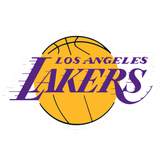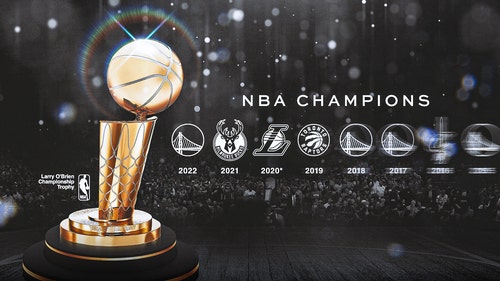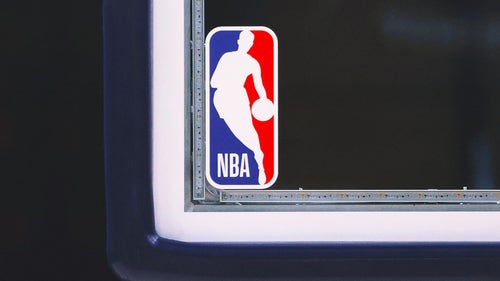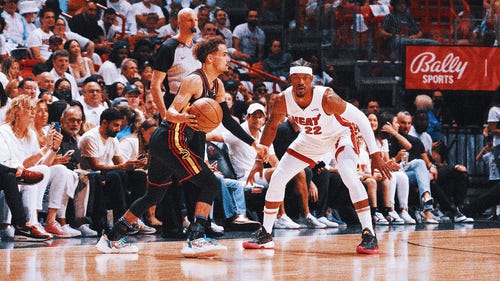
How the good fortune of the bubble turned into misfortune for the Lakers
What was once good fortune turned into calamity for the defending NBA champions.
In the span of a few months, the Los Angeles Lakers went from the high of winning their first championship since the 2009-10 season – Kobe Bryant's fifth and final title – to the disappointment of a first-round exit this year – LeBron James' first in his 18-year NBA career.
Now, questions abound regarding a team that dominated the Florida bubble in 2020 before seeing its quest for back-to-back titles unceremoniously end at the hands of another team that starred in the bubble, the Phoenix Suns.
How did things go downhill so quickly for the Lakers? Let's take a closer look at what went wrong for the purple and gold:
1. The quickest of turnarounds
The COVID-19 pandemic allowed the Lakers a four-month layoff to recoup in the middle of last season, but at the same time, it pushed the season back, meaning LeBron and Co. had to return expeditiously for this season after making it to the Finals last year.
The Lakers had a mere 70 days to bounce back from their championship run, which could have contributed to the injuries suffered by superstars Anthony Davis and James. It was the shortest offseason in not just NBA history but also NFL, MLB or NHL history, according to the Elias Sports Bureau.
Davis, who suffered a calf injury that caused him to sit out more than half of the 2020-21 regular season, didn't have much better luck in the postseason. He hyperextended his knee in the Lakers' first-round Game 3 victory over the Suns. In Game 4, the injuries piled up, as Davis suffered a Grade 1 groin strain on a missed layup and was held out of Game 5.
Davis attempted to play through the pain in Thursday's Game 6, but the eight-time All-Star lasted a little over five minutes before doubling over in pain on the sideline in the Lakers' season-ending loss to Phoenix.
For his part, James suffered a high right ankle sprain against the Atlanta Hawks in March, and it sidelined him for 26 games. After he returned to the court and helped the Lakers to a Play-In Tournament victory over the Golden State Warriors, reports started to circulate that the four-time NBA champion was still reeling from the ankle injury, with some going as far as to say James was playing "on one leg" heading into the first round of the playoffs.
Lakers shooting guard Kentavious Caldwell-Pope also missed time because of a lower leg injury and left knee soreness that limited him significantly in Games 4 and 5 — both Lakers losses.
2. Roster retool
Instead of holding on to most of their championship roster, the Lakers lost Dwight Howard, Danny Green, JaVale McGee and Rajon Rondo, and they added Marc Gasol, Montrezl Harrell, Dennis Schroder (who declined the Lakers’ efforts to negotiate an extension) and Andre Drummond late in the season.
Howard and Green both landed in Philadelphia, Rondo is now a member of the LA Clippers, and McGee is with the Denver Nuggets. And while none of the four is considered a superstar, they played a significant role for the Lakers in last year's title run, defensively and from a veteran leadership perspective.
On Friday, Lakers general manager Rob Pelinka said his main roster "goal is to try to keep that core group" of Davis, James, Caldwell-Pope, Schroder and Drummond "together" heading into next season.
"I'm convinced that, again, without some of the unforeseen circumstances this year, the challenges that we had to face, that we'd be a championship-caliber team," he said.
The Lakers can now look to free agency for new players to pad their starting five, but with more than $100 million already committed to just four players next season (James, Davis, Caldwell-Pope and Kyle Kuzma), that might be a challenge.
For more up-to-date news on all things Lakers, click here to register for alerts on the FOX Sports app!
3. The return of travel
The bubble eliminated travel, which benefited most teams but especially the Lakers, whose veteran roster was able to rest. The Lakers were 21-15 on the road this season, as opposed to 27-9 as a road team last year.
Occupational health scientists at Oregon Health & Science University, who specialize in sleep disturbance and circadian rhythms, studied how travel impacted players' performance when the bubble emerged last year.
They compared the performance of 22 NBA teams during the pre‐pandemic regular season (649 games played at home and 715 games played away) to their performance in the bubble (176 games played with teams living and playing in the bubble for their final eight regular-season games).
Teams that didn't travel at all performed better, with improved shooting accuracy and rebounding. Teams that traveled (particularly westward) were less likely to win. Teams that traveled across time zones had reduced winning percentages, team shooting accuracy and turnover percentages. Teams that traveled in general (not necessarily across time zones) had reduced offensive rebounding.
4. Putting the focus back on hoops
Teams and players weren't as focused on basketball last season, with the COVID-19 pandemic and social injustice plaguing the country. The LA Clippers voted to sit out the end of the season, Kyrie Irving suggested that players skip the bubble to focus on larger issues at hand, and even James said recently that he is not keen on returning to Orlando.
In addition, at one point in the bubble, play halted in the bubble after Jacob Blake was shot by police in Kenosha, Wisconsin.
This year, with the vaccine readily available and tensions somewhat eased when it comes to social injustice across America, NBA teams returned their focus to basketball.
For more up-to-date news on all things NBA, click here to register for alerts on the FOX Sports app!







